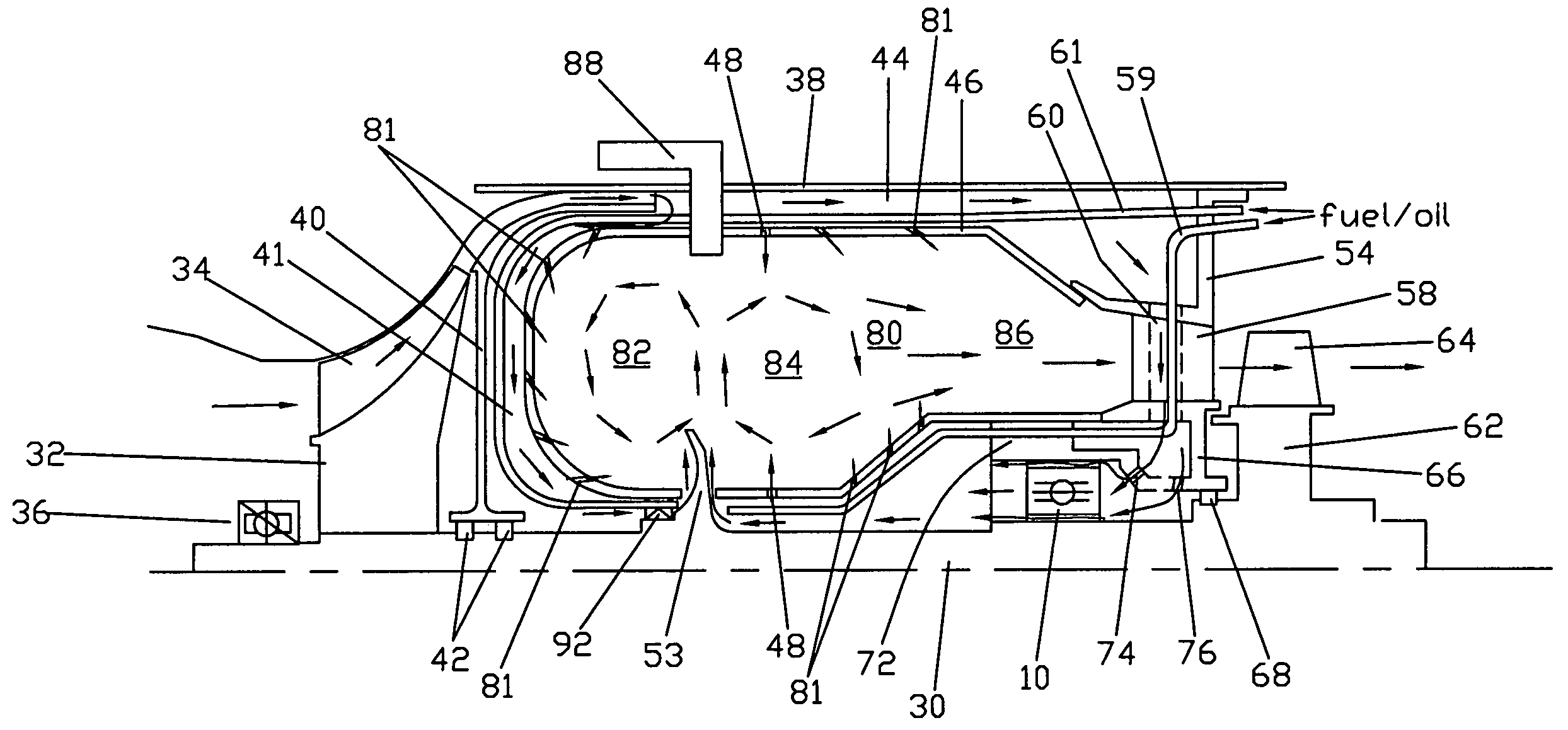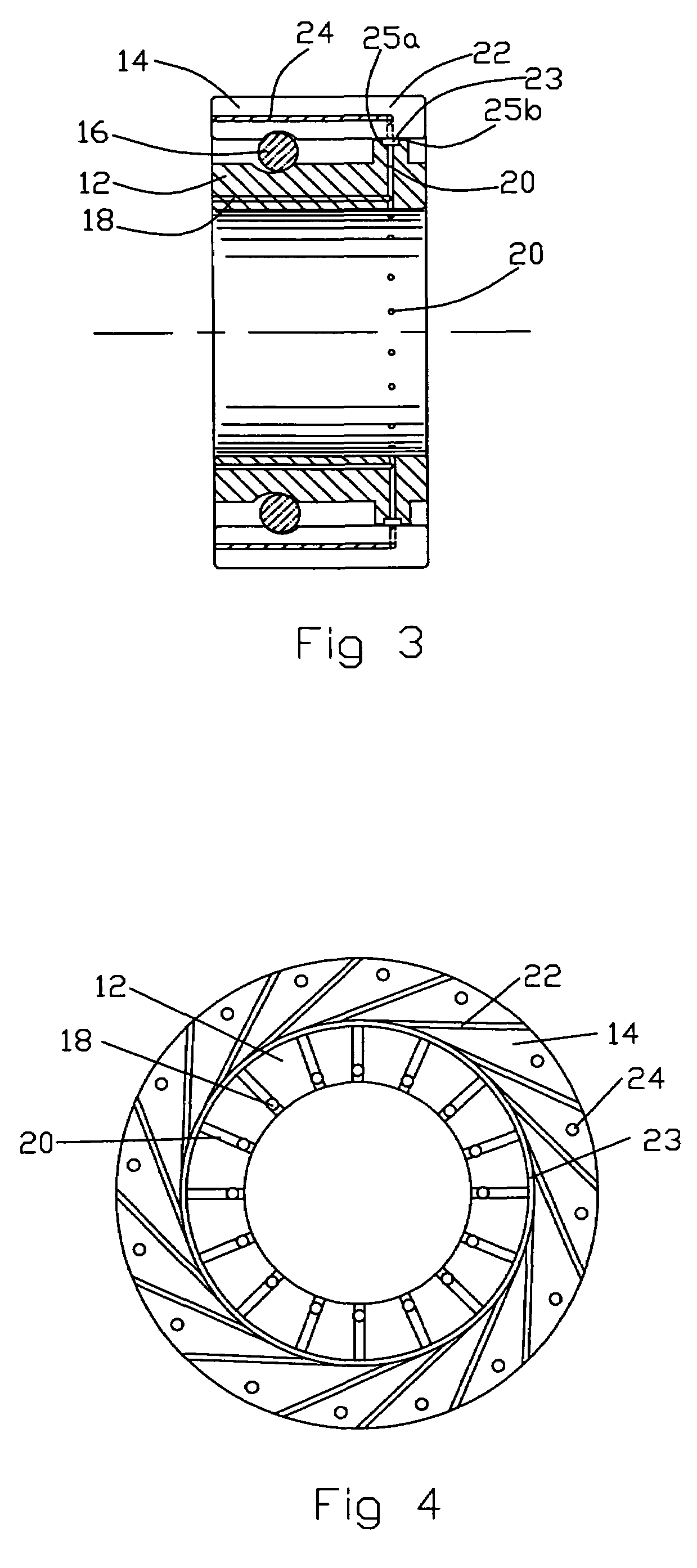Small gas turbine engine with multiple burn zones
a gas turbine engine and burn zone technology, applied in the ignition of turbine/propulsion engine, engine starter, engine, etc., can solve the problem that a combustion engine is not practical in a small, compact gas turbin
- Summary
- Abstract
- Description
- Claims
- Application Information
AI Technical Summary
Benefits of technology
Problems solved by technology
Method used
Image
Examples
Embodiment Construction
[0032]The present invention is a small gas turbine engine primarily used in Unmanned Arial Vehicles (UAV) such as a small cruise missile in which a rear bearing used to support the rotor shaft and located in the hot section of the turbine is cooled with cooling air diverted from the compressor, the cooling air passing through the bearing inner and outer races to maintain the races at similar temperatures to prevent radial clearance from developing in the bearing, the cooling air then being discharged into the combustor to be burned with fuel. A rotary cup fuel injector is used to inject fuel into the combustor, the combustor being separated into a primary burn zone located aft in the combustor and a secondary burn zone located downstream from the primary burn zone. The rotary cup fuel injector injects fuel into both burn zones to promote a swirl flow within the respective burn zones in order to promote full burning of the fuel. Compressed air supplied from the compressor passes over...
PUM
 Login to View More
Login to View More Abstract
Description
Claims
Application Information
 Login to View More
Login to View More - R&D
- Intellectual Property
- Life Sciences
- Materials
- Tech Scout
- Unparalleled Data Quality
- Higher Quality Content
- 60% Fewer Hallucinations
Browse by: Latest US Patents, China's latest patents, Technical Efficacy Thesaurus, Application Domain, Technology Topic, Popular Technical Reports.
© 2025 PatSnap. All rights reserved.Legal|Privacy policy|Modern Slavery Act Transparency Statement|Sitemap|About US| Contact US: help@patsnap.com



